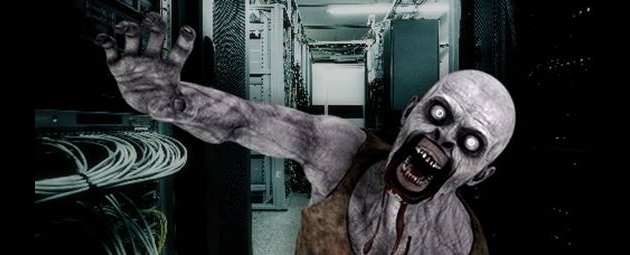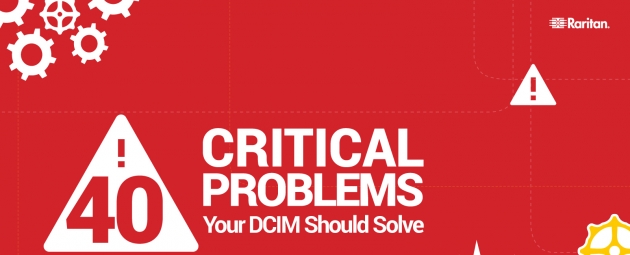博客
主页 » 博客 » What to do with your Zombie and Ghost Servers?
What to do with your Zombie and Ghost Servers?
Posted on March 4, 2015 by Gento

You know those servers that you have out in your data center, powered up but doing nothing? What do you do with them? While you can simply just let them continue running in your data center, they can actually cost you more than you think. Consider that a typical five year old server, that is not ENERGY STAR compliant could consume 175 watts at idle. If 10% of the servers in a 1000 server data center are ghost servers, and electricity costs $0.15/kwh, it equates to roughly $23,000 of un-necessary expense not including your cooling expenses. So what do you do? Do you take the risk and power them down, decommission them, and deal with potential screaming and risk of loss of operations later? Probably not.
The first thing you might want to do is to create a plan of action. Identify which servers are actually idle or under-utilized, where they are physically located and their associated owners. Without a Data Center Infrastructure Management (DCIM) solution, this could require manual work. For instance you may have to lookup excel files that store the information on the old servers, go to the data center to audit and verify information/existence, deploy power monitoring or server workload tools to verify utilization rates, find owners, etc. Unfortunately, even if the information is available, it may likely be out-of-date.
Rather than taking the drastic step of randomly shutting zombie servers down, companies like Barclay’s and Bloomberg have put strategic plans in place that have garnered company wide acceptance. The steps that have made them successful include: designing a workflow diagram agreed to by all stakeholders, automating the change management process including approvals, customizing the process where needed – including various notification processes and timelines, and continuing to manage and maintain. Does this sound like a complicated process? Not really, if you have DCIM.
Learn how leading technology company F5 uses DCIM Monitoring Software to manage power capacity and create an optimal data center environment for its IT equipment.
A DCIM system will provide you with substantial benefits in managing your decommission process. First, DCIM software provides a real-time accurate inventory view of all the assets in your data center – owners, location, application information, and power utilization trends are all stored in a single, searchable database. And not only that, connections – power and data, are also part of the asset information allowing you to know what is connected, what might be impacted, and what additional capacity you might free up if a server is decommissioned.
Second, a DCIM tool with a change management component provides for automated workflows and approval processes. No longer will you need to wander around the data center looking for someone to approve the request. Work orders requesting decommissioning activities for all associated components and connections are issued. Completed items are automatically documented and freed up inventory becomes available for reassignment.
Finally, how do you prove that this is really all worthwhile? DCIM software provides real-time information at a click of a button to help capture the savings due to the resulting changes in power and environmental (think a/c) requirements. Additionally, a DCIM solution that helps aid in the decommission process can help you save in hardware maintenance, software maintenance, and data center space while improving the productivity of people planning and working in the data center. And don’t forget the intangibles: using DCIM in managing a data center can simplify processes while reducing your risk to accidently shutting down something that might seem dormant, yet might be critical to operations. So be sure to invest in DCIM to keep the Zombies from catching up you with you.
Discover 40 Critical Problems Your DCIM Solution Should Solve to make sure you're getting the most from your DCIM solution.
Other Blog Posts
- The cascade effect of data center failure on businesses - why sensors are essential
- Posted on November 5, 2023
- 人工智能的快速发展和使用力登PDU满足更高的电力需求
- Posted on October 11, 2023
- Data Center Report Fewer Outages, But Downtime Still Costly
- Posted on September 20, 2023
- Survey: Energy Usage and Staffing Shortages Challenge Data Centers
- Posted on September 20, 2023
- 力登安全交换机(RSS):安全NIAP 4.0兼容式桌面型KVM
- Posted on September 20, 2023
力登官方微信公众号
力登官方微信公众号

近期活动
- New Zealand Cloud & Datacenter Convention 2022
- 3 November 2022, 9am – 4pm • Grand Millennium Hotel, Auckland, New Zealand
- Data Centre World Singapore
- 12th – 13th Oct 2022
- Korea Cloud & Datacenter Convention 2022
- 6th Oct 2022
- Philippines Cloud & Datacenter Convention 2022
- 4th Aug 2022
- JANOG50 Meeting Hokkaido
- 3th – 15th July 2022
力登最新新闻
- 重振数据中心行业—罗格朗重磅推出两款革命性的智能机架式PDU!
- Posted on May 1, 2023
- 独家专访丨惠州如何升级制造业?法资企业CEO提了个建议
- Posted on December 2, 2021
- 力登公司推出MasterConsole®数字双显示器KVM切换器
- Posted on February 18, 2021
- Legrand Data, Power and Control Division Announced as Finalist in Six Categories at DCS Awards 2020
- Posted on November 9, 2020
- 力登公司(Raritan)推出新型智慧型机架控制器(SRC),用于智能地管理数据中心和关键基础设施中的环境和安全信息
- Posted on November 9, 2020

